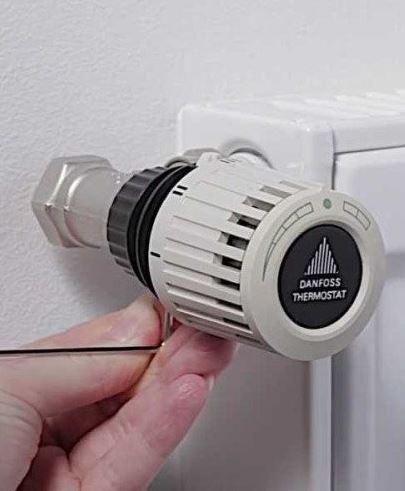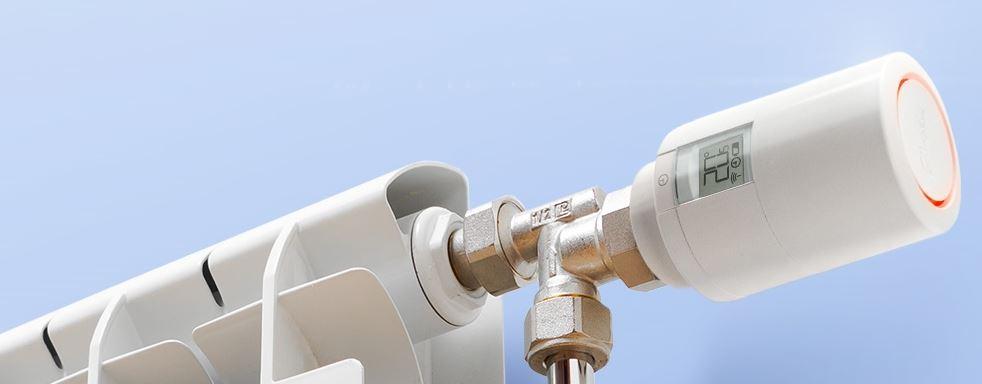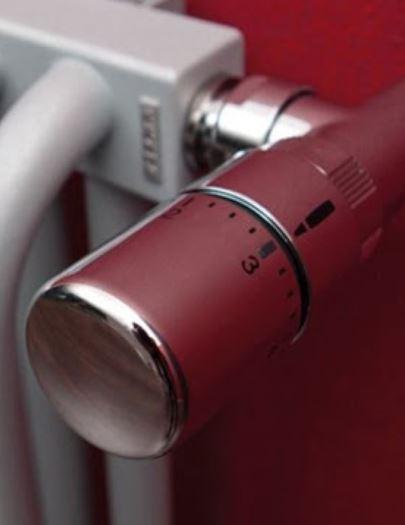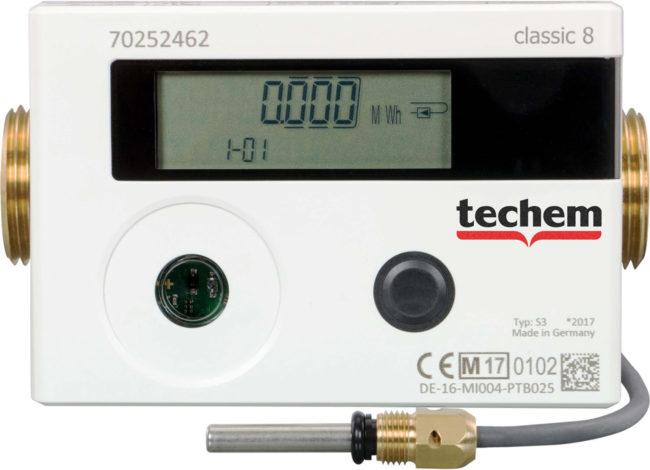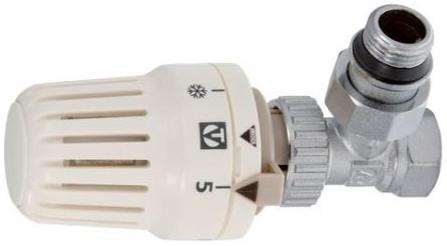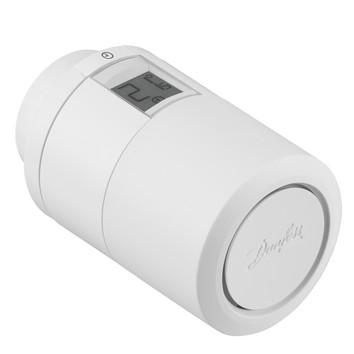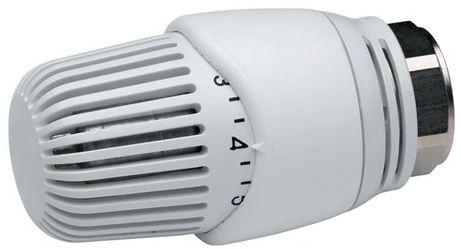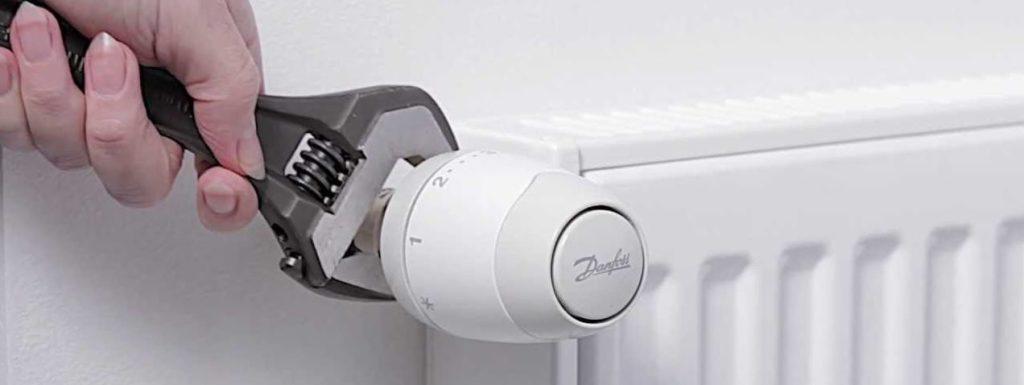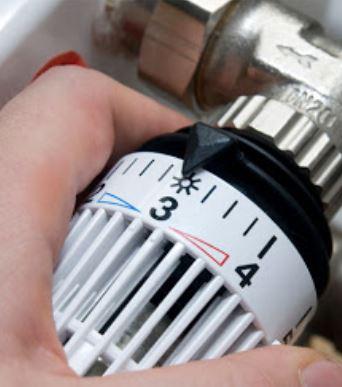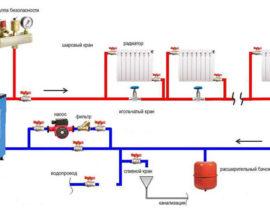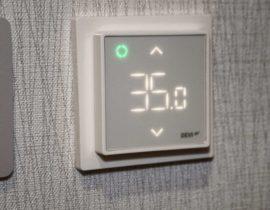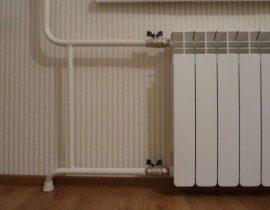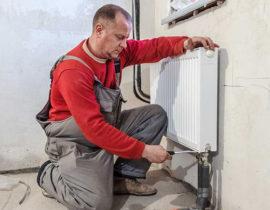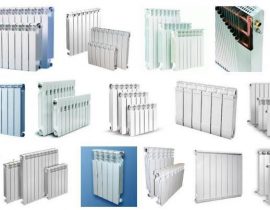A thermostat for radiators is a device that allows you to optimize the temperature in the room and reduce energy costs. The device can be installed on all types of batteries, with the exception of cast iron.
Content
Purposes and benefits of installation
Installation of thermostats on radiators allows you to set the desired temperature in the premises. The device changes the amount of coolant supply, which accordingly reduces the air temperature.
The thermostat is a great alternative to the ball valves that are familiar to many. Their use is not always convenient and appropriate. The tap must be constantly opened and closed, which leads not only to temperature fluctuations in the room, but also to the failure of the part itself.
By installing a thermostat, these problems can be avoided. In this case, there is no need to periodically open and close the valve.
Pros of a thermostat:
- the processes of adjusting the supply of coolant are carried out automatically;
- there is a possibility of zonal change of parameters;
- reducing the volume of coolant entering the battery allows you to reduce heating costs;
- no need for maintenance.
In boiler rooms, the thermostat is used to protect against overheating and overloading. The device will prevent accidents by controlling the increase in water temperature and pressure.
Types of thermostats
According to the principle of operation, thermostats are divided into mechanical, electronic and semi-electronic. Each type differs in device, principle of operation, has certain advantages and disadvantages.
 Mechanical
Mechanical
Device with manual setting. The device consists of a thermo valve and a highly sensitive head.
The mechanism works stably and efficiently without external energy according to the following principle:
- Under the influence of temperature, the volume of the coolant in the system changes.
- The bellows senses the changes and moves the control spool.
- The sensitive element moves the rod, which regulates and controls the supply of coolant to the radiator.
The main advantages of mechanical thermostats:
- low cost;
- ease of installation.
But mechanical devices have more disadvantages:
- less efficiency;
- the need for constant adjustment;
- quick failure of the protective cap.
Electronic
A microprocessor is installed inside this device, which is responsible for heating the radiator. The device is equipped with a sensor that measures the heating of the coolant or air in the room. The received data is used for configuration. This type of thermostat can be adjusted by degrees.
A keypad is used to adjust the electronic device. The indicators are shown on the display.The electronic device has in its design a mechanical part similar to the above device. The bellows in the device is cylindrical, the walls are made in the form of corrugations.
Manufacturers offer users 2 types of electronic devices:
- closed - with autotuning;
- open – All settings must be entered by yourself.
Semi-electronic
The principle of their work is similar to mechanical, but there are some differences. The bellows head is guided by the room temperature. The sensor for devices is remote. It is connected to the working part by a capillary tube.
Instrument selection criteria
When selecting a thermostat, they are guided by the type of heating system installed in the house and the following characteristics:
- Material. The body is made of bronze, nickel-plated brass or stainless steel. The best choice is stainless steel. The material is chemically neutral, does not rust and does not react with other metals. But the cost of such models is quite high. Bronze and brass appliances are the same in terms of service life. In this case, the quality of the alloy is important. It is carefully monitored by well-known manufacturers, so preference should be given to them.
- Way of execution. Radiators in houses are installed in different ways, respectively, the valves are made straight (through) and angular (vertical and horizontal). There is a model, nozzles and heads of which are placed in 3 perpendicular planes.
- Compliance with the heating system. For single-pipe systems, large hydraulic resistance values on control valves are not suitable. Therefore, models for them need to be chosen with a wider cross section. In the accepted classification, it is marked with the letter index G (for example, RTR - G).They are also suitable for two-pipe systems with natural circulation. For two-tubes with forced circulation, where the pressure reaches significant values, other models are used: marked N or D.
- Sensor type. Gas and liquid thermostats come with a remote and built-in sensor. It is better to use remote ones when the battery is behind thick curtains, the thermostat is installed vertically, the radiator depth is more than 16 cm or it is in a niche. Devices with a built-in sensor require air circulation around them, so they are installed horizontally.
Do not seek to install thermostats on all batteries. To ensure normal adjustment in each room, it is worth equipping no more than 50% of heating devices with devices: 1 out of 2, 2 out of 3, and so on.
The difference between gas and liquid appliances
An important criterion for choosing a device is the type of internal filler.
When buying, you should pay attention to the following points:
 Gas models have a long service life of about 20 years. The gas reacts smoothly to temperature changes, and this does not cause excessive or sudden loads on the equipment.
Gas models have a long service life of about 20 years. The gas reacts smoothly to temperature changes, and this does not cause excessive or sudden loads on the equipment.- Liquid thermostats respond quickly. This affects the wear of working parts, but allows you to quickly respond to a drop or rise in temperature.
- In liquid thermostats, the sensor can be remote or built-in. If it is built-in, the device is placed in a horizontal position. It is advisable to install remote sensors when the device is closed with curtains, the thermostat is located vertically, the radiator is installed in a niche or at a distance of less than 10 cm from the window sill.
The best manufacturers of thermostats
The global market for heat appliances offers consumers many models of thermostats of various modifications.
Taking into account the assessments of experts and consumers, we can name the leading companies in this field, whose devices have demonstrated reliability and efficient operation:
- Mondial Electronics Co. is a Chinese manufacturer well-established in the production of consumer electronics and equipment for light industry. The company's products combine quality and low price.
- Devi is a Danish company that has been manufacturing thermostats since 1942. Initially, the production was aimed at the production of heating elements for industry. Today the company is included in the list of world market leaders in the field of electric heating.
- RTC Electronics is a company from South Korea. Engaged in the development of electronic devices for home and industrial use. The products are well adapted to the needs of the domestic market.
- Techem is a Swedish manufacturer specializing in the manufacture of instruments and devices for automated metering of gas, water, electricity, and heat consumption.
- Valtec - joint production of Russia and Italy. The main activity is to create engineering plumbing adapted to Russian water and heat supply systems.
- Terneo - Ukrainian brand, owned by DS Electronics. Since 2003, he has been developing and producing temperature controllers and voltage relays. Taking into account new technologies, improved devices are constantly being produced.
- Ranco is an Italian company that develops high-tech components for dies and molds. In Europe and the states, this name is considered synonymous with reliability.
Overview of recommended models
It is necessary to select a thermostat for a specific heating system, taking into account the conditions of its operation. But there are brands and models that are recommended by experts and many users.
Techem HKR
Like all Techem brand products, the device is of unsurpassed quality. Experts emphasize the reliability of the design, long service life. This model is a serious, multifunctional unit with many modes and a bright display.
Powered by 2 Mignon batteries. Fast adjustment temperature saves energy costs. The operating mode can be programmed according to your own requirements. Disadvantages, except for the high price, the thermostat was not found.
Valtec corner 1⁄2
In this model, an angle valve acts as a thermostat, which allows you to automatically control the flow of the coolant with an accuracy of 1 degree. The requirement from the manufacturer is installation in a system with a maximum temperature of 110 degrees, pressure up to 10 atmospheres. Half-gon facilitates installation without interfering with the pipeline.
Advantages:
- compactness;
- easy installation;
- maintainability;
- Service life up to 30 years;
- low price.
Flaws:
- at a water pressure above 10 bar, it can leak and flood the room;
- come across devices with marriage.
Danfoss Eco
The Danfoss EcoTM electronic programmable thermostatic element is used with thermostatic valves with clip-on and threaded connections. The device has two sensors, thanks to which the most accurate temperature control is achieved. The reaction of the thermoelement is only 3 minutes.
Advantages:
 the ability to program and control through the Danfoss EcoTM App on a smartphone via Bluetooth;
the ability to program and control through the Danfoss EcoTM App on a smartphone via Bluetooth;- the presence of adapters, due to which the thermoelement is suitable for almost all existing valves;
- the presence of a function to turn off the device in case of a sharp drop in temperature in the room, which allows you to save energy during ventilation;
- the presence of an adaptive learning function, thanks to which the thermostat determines when to start heating the premises in order to reach the required temperature by a certain time;
- the presence of a valve testing function, due to which the thermostat fully opens the valve weekly and then returns it to its previous position to prevent sticking of the stem.
Oras Stabila
Thermostatic valve made in Finland with pre-adjustment. Designed for two-pipe systems with forced circulation. It consists of a control valve and a thermostatic head. The valve cuts into the line in front of the radiator, a head is installed on it.
Installation Features
The thermostat will work effectively with proper installation. First of all, you need to determine the place of its installation. Installation height - at least 80 cm.
In private houses, the installation of appliances starts from the upper floors, in apartments - from rooms with significant temperature fluctuations: living room, kitchen.
Work sequence:
- Shut off the riser and drain the water.
- At a short distance from the radiator, cut off the horizontal pipe connections and disconnect them and the taps from the radiator.
- When installing the device in a single-pipe heating system, a jumper is additionally welded between the pipes for supplying and discharging the coolant.
- From the thermostatic valve and stopcock, remove the shanks with nuts, wrap them in the radiator plugs.
- Assemble install piping.Connect it with horizontal lines.
Instrument setup
In electronic models, it is enough to set the desired temperature on the scale or display. If possible, choose the temperature regime for the time of day, days of the week. This mode is optimal for summer cottages, where the owners appear on short visits.
Mechanical models require a longer setup:
- Close windows, doors, vents, turn off the hood to limit heat leakage
- Place a thermometer in the room.
 Turn the thermostat head all the way to the left to open the valve. In this position, maximum heat transfer of the battery is achieved.
Turn the thermostat head all the way to the left to open the valve. In this position, maximum heat transfer of the battery is achieved.- After warming up the room by 5-6 degrees, shut off the flow of coolant by turning the valve of the device to the right.
- The temperature will start to drop. As soon as it reaches the indicators you need, start slowly opening the valve until you hear the sound of water. The head should warm up.
- Leave the valve in the selected position. In the future, it will work at the temperature you set.
FAQ
You want to put an expensive model where it can be cheaper. This is not advisable. In general, nothing will explode, and nothing will fall off. It can threaten the incorrect operation of the regulator.
The ball valve has only 2 positions: open and closed. It is impossible to regulate their heating by setting it in a half position. The crane will quickly fail due to the accumulation of salt and pieces of rust and will stop turning.
From an economic point of view, the installation of thermostats is especially advisable in private houses with autonomous heating. In apartments with a centralized supply of coolant, the use of these devices will help improve the microclimate, achieving a comfortable mode without radical overlapping of radiators and systematic ventilation.
Video tips for choosing a thermostat for heating radiators

